- Why You Should Store Seedlings in Winter
- Benefits of Proper Seedling Storage
- Preparing Your Seedlings for Winter Storage
- 1. Watering
- 2. Transplanting
- 3. Hardening Off
- 4. Mulching
- 5. Shelter
- 6. Monitoring
- Choosing the Right Storage Method
- Cold Storage: The Traditional Method
- Indoor Storage: An Alternative Approach
- Choose a Suitable Location
- Prepare the Space
- Provide Adequate Lighting
- Maintain Proper Humidity
- Control Temperature Fluctuations
- Monitor and Water Regularly
- Outdoor Storage: A Natural Option
- Cold Frames
- Windbreaks
- Mulching
- Row Covers
- Alternative Storage Methods to Consider
- 1. Mini Greenhouse
- 2. Indoor Grow Lights
- 3. Cold Frames
- 4. Root Cellar
- 5. Community Garden
- Conclusion
- Tips for Successful Seedling Storage
- Questions and Answers:
- Can I store seedlings indoors during the winter?
- Is it necessary to store seedlings in a refrigerator during winter?
- What is the best method for storing seedlings in winter?
- Can I store seedlings in my garden during the winter?
- What temperature should I store seedlings at during the winter?
- Should I water seedlings while they are in storage during winter?
- How long can I store seedlings in winter before planting them?
- Videos: How I Store ROOT VEGETABLES (that last through the winter!) | Market Garden | Grow GREAT carrots!
Winter can be a challenging time for gardeners, especially when it comes to caring for delicate seedlings. If you’ve spent hours nurturing young plants and want to protect them from freezing temperatures, proper storage is essential. There are several methods you can use to keep your seedlings safe during the winter months, and finding the best one for you depends on the space and resources you have available.
One common method is to store seedlings in a cold frame or unheated greenhouse. These structures provide shelter from harsh winter conditions while still allowing the seedlings to receive some natural light and ventilation. Cold frames are typically made of wood or aluminum and feature a transparent lid that can be opened for airflow and closed to retain heat. Unheated greenhouses are similar but larger, providing more space for your seedlings to grow. Both options require careful monitoring of temperature and humidity levels to ensure your plants stay healthy.
If you don’t have a cold frame or greenhouse, another option is to store seedlings indoors. Choose a location that is cool but not too cold, such as a basement or a cool room in your home. Make sure the area has good air circulation and is away from direct heat sources. You can place the seedlings on a tray with a layer of gravel or pebbles to help maintain moisture levels. It’s important to regularly check on the seedlings and water them as needed, as indoor environments can be dry.
If you have limited space, another option is to store seedlings in sealed containers or bags. This method is ideal for small-scale gardening or if you only have a few seedlings to store. Place the seedlings in a container or bag with some moist soil or a damp paper towel to keep them hydrated. Seal the container or bag and store it in a cool, dark place, such as a cellar or an unheated garage. Just make sure to open the container or bag occasionally to check on the moisture levels and prevent mold growth.
With these storage options in mind, you can protect your seedlings during the winter months and ensure they thrive when spring arrives. Consider your available space, resources, and the number of seedlings you need to store to choose the best method for you. By taking the time to properly store your seedlings, you’ll give them the best chance of survival and enjoy a bountiful garden in the coming seasons.
Why You Should Store Seedlings in Winter
Storing seedlings in winter is crucial for their survival and future growth. It allows you to protect the delicate plants from the harsh winter conditions, ensuring that they remain healthy and ready for planting in the spring. Here are a few reasons why you should consider storing your seedlings:
- Protection from freezing temperatures: Winter temperatures can be extremely cold and can easily damage or kill young seedlings. Storing them indoors or in a greenhouse provides a controlled environment where the temperature can be kept at optimal levels for the plants to thrive.
- Protection from frost: Frost can be a major threat to seedlings, as it can cause damage to their delicate tissues. By storing seedlings indoors or in a protected area, you can prevent them from being exposed to frost and ensure their survival.
- Preservation of moisture: In winter, the soil tends to dry out due to the cold weather, making it difficult for seedlings to absorb water and nutrients. Storing seedlings in a controlled environment allows you to regulate the moisture levels, ensuring that they have access to the water they need for healthy growth.
- Protection from pests and diseases: By keeping seedlings indoors or in a greenhouse, you can minimize the risk of pest infestations and diseases that are more common during winter. The controlled environment makes it easier to monitor and prevent any potential issues.
In summary, storing seedlings in winter is essential for their survival and future growth. It helps protect them from freezing temperatures, frost, moisture loss, pests, and diseases. By taking the necessary precautions and providing a controlled environment, you can ensure that your seedlings stay healthy and ready for planting when the weather becomes more favorable in the spring.
Benefits of Proper Seedling Storage
Proper seedling storage is essential for the success of your garden. Here are some benefits of storing your seedlings correctly:
- Protection from frost: Storing your seedlings properly during winter protects them from the harsh frost and cold temperatures. This helps to ensure their survival and healthy growth when you transplant them into your garden in spring.
- Preservation of moisture: By storing your seedlings appropriately, you can prevent the soil from drying out. This is important because dry soil can cause the seedlings to wither and die. Proper storage methods help to retain moisture and keep the soil in optimal condition for the survival of your plants.
- Prevention of diseases and pests: Proper storage reduces the risk of your seedlings being infested by pests or contracting diseases during the winter months. By providing a controlled environment, you can minimize the chances of your seedlings being affected by harmful organisms.
- Space optimization: Storing your seedlings effectively allows you to make the most of the available space. By using space-saving storage methods, you can maximize the number of seedlings you can store, making it easier to manage and organize your garden.
- Cost savings: Proper seedling storage helps to preserve the health and vitality of your plants. This can save you money in the long run, as you won’t need to spend extra on replacing unhealthy or damaged seedlings.
Overall, proper seedling storage is crucial for ensuring the success of your garden. By providing the optimal conditions for your seedlings during winter, you can protect them from frost, preserve moisture, prevent diseases and pests, optimize space, and save money. Take the time to choose the storage method that works best for you and enjoy the benefits of healthy and vibrant plants in your garden!
Preparing Your Seedlings for Winter Storage
Properly preparing your seedlings for winter storage is crucial to ensure their survival and healthy growth when spring arrives. Below are some important steps to follow:
1. Watering
- Thoroughly water your seedlings before storing them for the winter.
- Ensure that the soil is evenly moist but not waterlogged.
- Avoid watering from above to prevent excess moisture on the foliage.
2. Transplanting
- If your seedlings are still in small pots, consider transplanting them into larger containers or garden beds before winter.
- Transplanting will give the seedlings more space to grow and establish stronger roots.
- Ensure that the transplanting process is done carefully to avoid damaging the seedlings.
3. Hardening Off
- Gradually expose your seedlings to outdoor conditions to help them adjust and strengthen before winter.
- Start by placing the seedlings in a sheltered area for a few hours a day, gradually increasing the exposure over a week or two.
- This process, known as hardening off, will prepare the seedlings for the colder temperatures and harsher weather conditions of winter.
4. Mulching
- Apply a layer of mulch around the base of your seedlings to insulate the soil and protect the roots from freezing temperatures.
- Choose a mulch material such as straw, leaves, or wood chips and apply it to a depth of a few inches.
- Avoid piling mulch directly against the stems of the seedlings to prevent rot and disease.
5. Shelter
- If the winter temperatures in your region are extremely cold, consider providing additional shelter for your seedlings.
- You can use a cold frame, hoop house, or even a temporary structure made from plastic or fabric to protect the seedlings from freezing winds and heavy snow.
- Ensure that the shelter allows for proper ventilation to prevent excess humidity and mold growth.
6. Monitoring
- Regularly check on your seedlings throughout the winter to ensure they are not experiencing any issues.
- Check the moisture level of the soil and adjust watering as needed.
- Inspect the foliage for signs of pests or disease and take appropriate measures to control any problems.
Note: The specific requirements for preparing seedlings for winter storage may vary depending on the type of plant and your geographical location. It is always helpful to research the specific needs of your seedlings or consult with a local gardening expert for tailored advice.
Choosing the Right Storage Method
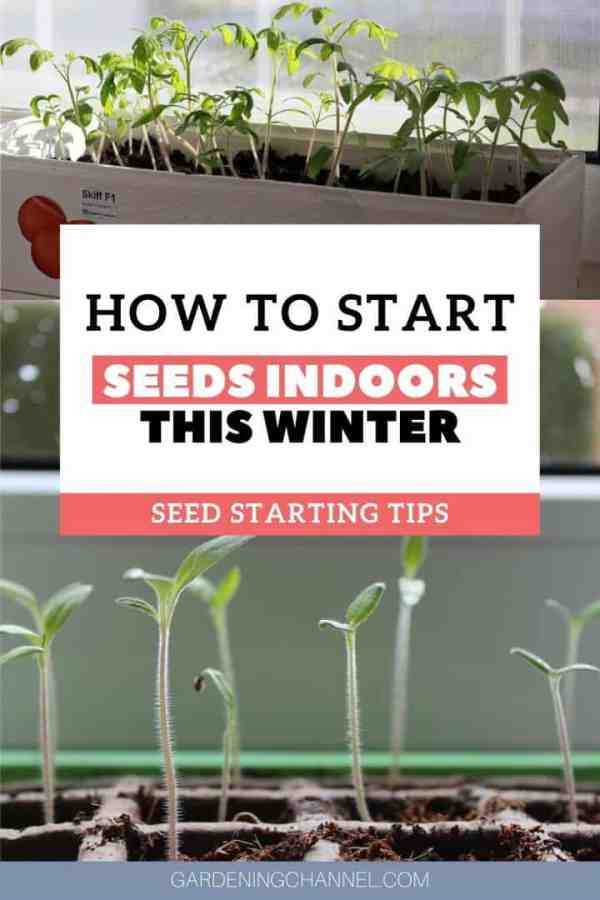
When it comes to storing seedlings in winter, it is important to choose the right method to ensure their survival. There are several factors to consider when deciding on the best storage method:
- Type of Plant: Different types of seedlings have different temperature and humidity requirements. Some plants may require a specific storage method, such as cold stratification or refrigeration, while others may tolerate being stored at room temperature.
- Duration of Storage: The length of time you need to store the seedlings will also play a role in choosing the storage method. Short-term storage options may include using a greenhouse or cold frame, while long-term storage may require more specialized methods.
- Available Space: Consider the amount of space you have available for storing seedlings. Some methods, such as using a refrigerator or cold room, may require a larger space than others.
- Budget: Your budget may also impact your choice of storage method. Some options, such as purchasing a commercial refrigerator or building a heated greenhouse, may be more costly than others.
Once you have considered these factors, you can choose the storage method that best suits your needs. Here are some popular options:
- Refrigeration: Storing seedlings in a refrigerator is an effective method for many types of plants. It provides a controlled temperature and humidity level to help the seedlings survive the winter.
- Cold Frame: A cold frame is a simple structure that uses transparent materials, such as glass or plastic, to create a mini greenhouse. It provides protection from the elements while allowing sunlight to reach the seedlings.
- Heated Greenhouse: If you have the space and budget, a heated greenhouse is an ideal storage method for seedlings. It allows you to control the temperature and humidity levels, ensuring optimal conditions for the plants.
- Cold Stratification: Some seeds, particularly those of native plants, require a period of cold stratification to germinate. This can be simulated by placing the seeds in a moist medium and storing them in a cold location, such as a refrigerator.
- Indoor Growing: For seedlings that require warmth and sunlight, indoor growing may be the best option. You can use grow lights and heat mats to provide the necessary conditions for the plants.
Remember that each method has its own advantages and disadvantages, so it is important to research and choose the best option for your specific seedlings. By selecting the right storage method, you can ensure the survival of your seedlings throughout the winter season.
Cold Storage: The Traditional Method
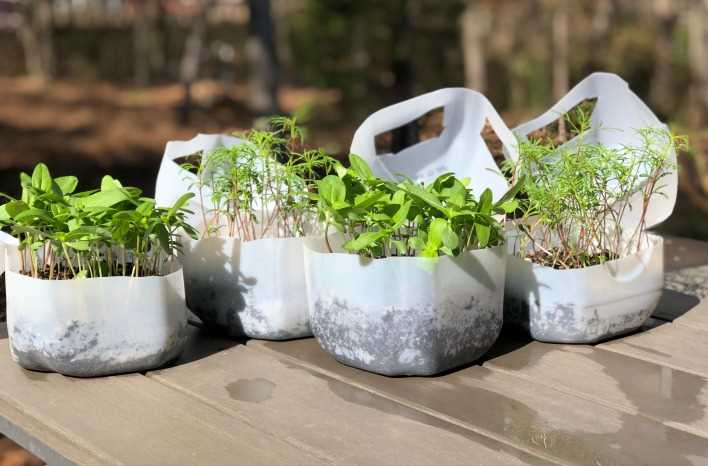
If you have a large quantity of seedlings that you need to store over the winter months, the traditional method of cold storage might be the best option for you.
Here are the steps to follow:
- Prepare the seedlings: Before storing the seedlings, make sure they are healthy and free from any diseases or pests. Prune any damaged or diseased parts of the plants.
- Choose the right containers: Traditional cold storage involves using pots or containers filled with a loose, well-draining soil mix. Make sure the pots have drainage holes at the bottom to prevent waterlogging.
- Protect the roots: Carefully remove the seedlings from their original pots, taking care not to damage the roots. Gently loosen the roots and remove any excess soil.
- Wrap the roots: After removing the excess soil, wrap the roots of each seedling in moist newspaper or burlap. This will help keep the roots hydrated during storage.
- Store in a cool location: Find a cool location for storing the seedlings, such as a basement or garage. The temperature should be around 35-45°F (1-7°C).
- Arrange the seedlings: Place the wrapped seedlings in the containers, making sure they are not overcrowded. Leave some space between each seedling to prevent them from touching.
- Keep the humidity levels in check: To prevent the seedlings from drying out, you can place a tray of water near the containers. This will help maintain the humidity levels.
- Check regularly: Check the stored seedlings regularly to make sure they are not showing any signs of disease, pests, or drying out. Remove any damaged or diseased seedlings immediately.
Note: Not all types of seedlings can successfully be stored using the traditional cold storage method. It is important to research the specific requirements of your seedlings before proceeding.
Indoor Storage: An Alternative Approach
If you don’t have access to a greenhouse or other outdoor space to store your seedlings during winter, indoor storage can be a great alternative. While it may require a bit more effort and planning, it can still provide a suitable environment for your delicate plants.
Choose a Suitable Location
The first step in indoor storage is to find a suitable location for your seedlings. Ideally, this area should have good lighting, moderate humidity, and consistent temperatures. A south-facing window or a well-lit room with grow lights can provide the necessary light for your seedlings to thrive.
Prepare the Space
Before bringing your seedlings indoors, make sure to prepare the space properly. Clean the area, removing any dust or debris that could harbor pests or diseases. If necessary, set up shelves or plant stands to maximize the available space and ensure proper airflow around your seedlings.
Provide Adequate Lighting
Indoor storage usually requires supplemental lighting to compensate for the reduced daylight during winter. You can use fluorescent lights, LED grow lights, or even specialized plant grow lights to provide the necessary light spectrum for your seedlings. Position the lights at a suitable height above the plants to mimic the intensity and duration of natural sunlight.
Maintain Proper Humidity
Humidity levels can drop significantly indoors during winter, which can be harmful to your seedlings. To maintain proper humidity, consider using a humidifier or placing a tray of water near your plants. Grouping your seedlings together can also help to create a microclimate with higher humidity.
Control Temperature Fluctuations
Temperature fluctuations can be challenging to control indoors, but it’s essential to provide a stable environment for your seedlings. Keep your seedlings away from drafts or areas with extreme temperature changes, such as near windows or heating sources. If needed, use a small heater or a heat mat to provide consistent warmth for your plants.
Monitor and Water Regularly
It’s crucial to monitor your seedlings regularly while they are stored indoors. Check the soil moisture level and water as needed, ensuring that it doesn’t become too dry or too waterlogged. Avoid overwatering, as this can lead to root rot and other issues.
By following these indoor storage tips, you can provide a suitable environment for your seedlings during winter. With proper care, your seedlings will be ready to thrive when the warmer spring weather arrives.
Outdoor Storage: A Natural Option
If you have limited indoor space or prefer a more natural approach to storing your seedlings, outdoor storage can be a great option. Here are a few methods you can use:
Cold Frames
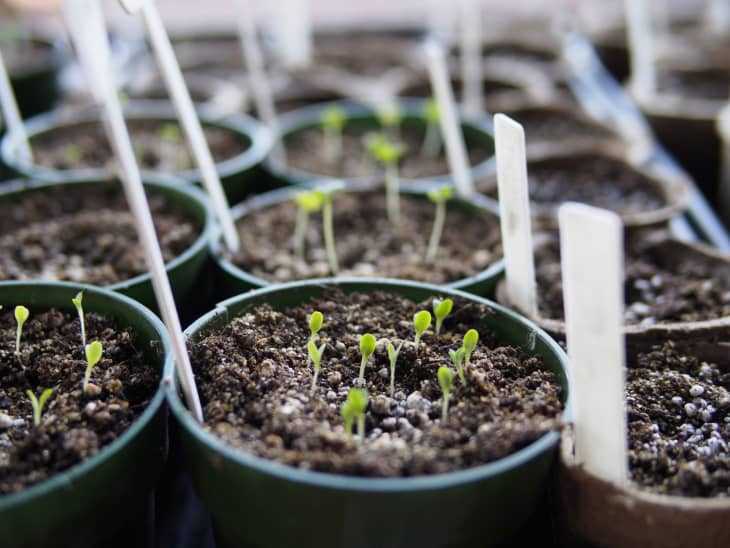
Cold frames are essentially mini greenhouses that provide protection to your seedlings while allowing them to still experience outdoor elements. These structures typically have a transparent top that lets in sunlight and retains heat, creating a warm and sheltered environment for your plants.
To use a cold frame for seedling storage, follow these steps:
- Select a location that receives ample sunlight.
- Prepare the soil by removing any debris and loosening it with a garden fork.
- Place your seedlings inside the cold frame, ensuring they are properly spaced.
- Water the seedlings regularly, making sure not to overwater.
- Ventilate the cold frame during warm sunny days to prevent overheating.
Windbreaks
Using windbreaks is another natural method to protect your seedlings from harsh winter winds. A windbreak is a barrier that reduces wind speed and redirects it away from the seedlings. This can be achieved by using materials such as burlap, fabric, or even a constructed fence.
To create a windbreak for your seedlings:
- Determine the direction of the prevailing winter winds in your area.
- Position your windbreak on the windward side of your seedlings.
- Secure the windbreak by staking it into the ground or attaching it to a sturdy structure.
- Make sure the windbreak is tall enough to provide adequate protection from the wind.
Mulching
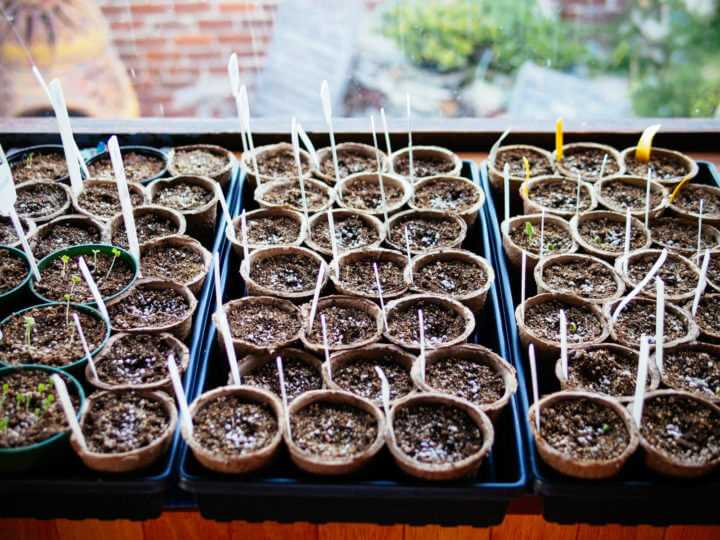
Mulching is a simple yet effective method to insulate your seedlings and protect them from freezing temperatures. By adding a layer of organic mulch around the base of the plants, you can help regulate soil temperature and conserve moisture.
To mulch your seedlings:
- Choose an organic mulch like straw, hay, leaves, or wood chips.
- Spread a layer of mulch around the base of the seedlings, ensuring not to cover the stems.
- Extend the mulch layer outwards to cover the entire root zone.
- Water the seedlings before applying the mulch and avoid overmulching, as it can lead to excessive moisture retention.
Row Covers
Row covers are lightweight fabric sheets that act as a protective barrier for your seedlings. They allow sunlight, air, and moisture to reach the plants while providing insulation against cold temperatures and frost.
To use row covers for seedling storage:
- Choose row covers made from materials like polyethylene or spunbond fabric.
- Drape the row cover over a supportive structure or directly over the seedlings, ensuring it is securely anchored.
- Leave enough slack in the row cover to allow for plant growth.
- Secure the edges of the row cover with weights or by burying them in the soil.
Remember, when using outdoor storage methods, it’s essential to monitor your seedlings regularly for signs of pests, diseases, or excessive moisture. By choosing the right outdoor storage method and providing proper care, your seedlings will have the best chance of surviving the winter and thriving in the spring.
Alternative Storage Methods to Consider
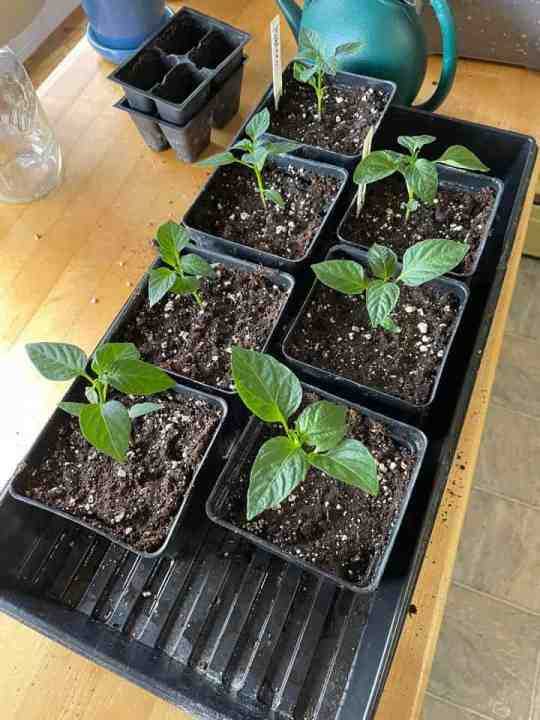
While the traditional methods of storing seedlings may work well for many gardeners, there are also some alternative storage methods that you may want to consider. These methods can be useful if you have limited space or if you want to try something different.
1. Mini Greenhouse
A mini greenhouse is a great option if you have a small yard or patio. This type of greenhouse is usually small and portable, making it easy to move around as needed. You can place your seedlings inside the greenhouse, where they will be protected from the cold temperatures and harsh winds of winter. Just make sure to monitor the temperature inside the greenhouse and open vents if it gets too hot.
2. Indoor Grow Lights
If you don’t have access to a greenhouse or if you want to save space, indoor grow lights can be a good alternative. These lights provide the necessary light spectrum for seedlings to grow strong and healthy. You can set up a shelving system with the lights above each shelf and place your seedlings on the shelves. Make sure to adjust the height of the lights as the seedlings grow to ensure they are getting enough light.
3. Cold Frames
Cold frames are simple structures that can be a great alternative to traditional storage methods. They consist of a transparent lid and a solid frame. You can place your seedlings inside the cold frame, which will provide them with some protection from the cold temperatures and wind. Cold frames also allow for better ventilation compared to traditional storage methods, reducing the risk of mold and disease.
4. Root Cellar
If you have a root cellar or a cool, dark basement, you can store your seedlings there. These areas tend to have a more stable temperature and can provide the seedlings with protection from frost. Just make sure to monitor the humidity levels as excessive moisture can lead to rotting. Using trays or containers with drainage holes can help prevent waterlogging.
5. Community Garden
If you don’t have space at home or prefer not to store your seedlings there, you can consider utilizing a community garden. Many community gardens offer storage options for gardeners during the winter months. This allows you to keep your seedlings safe and provide them with the care they need without taking up space at home.
Conclusion
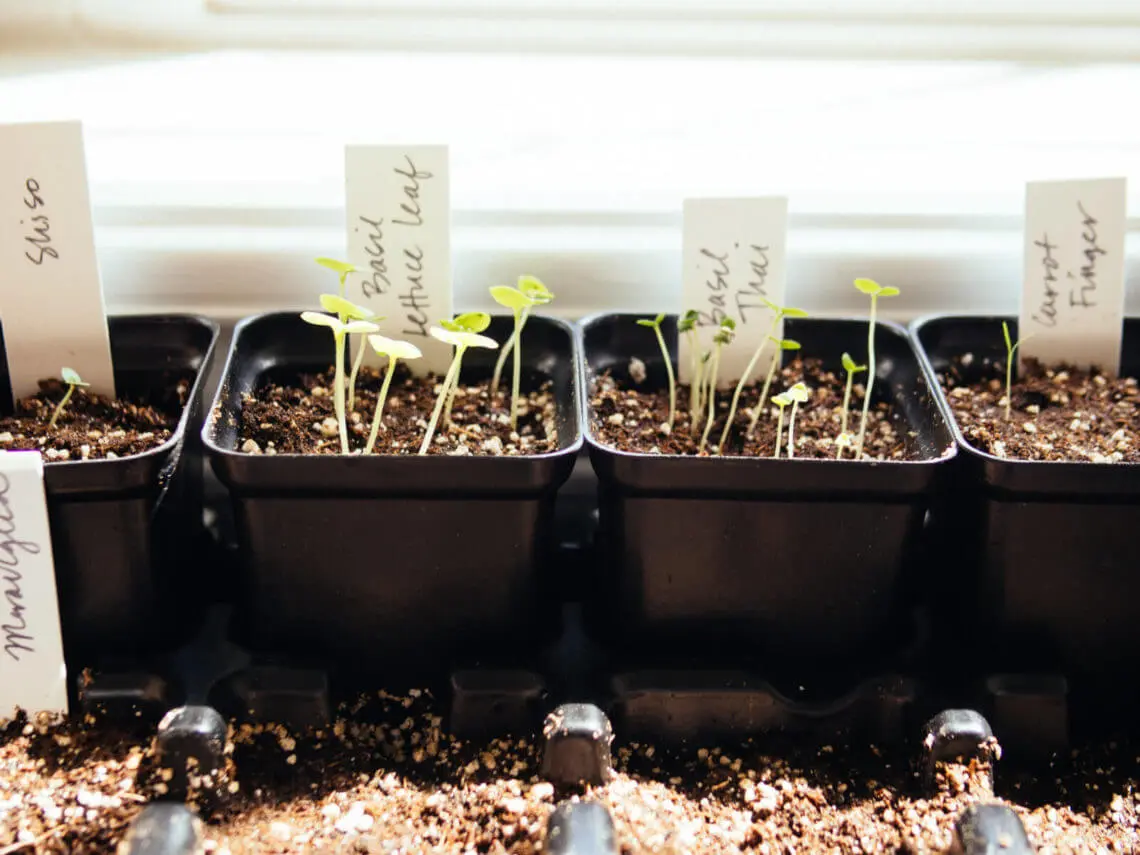
When it comes to storing seedlings in winter, there are several alternative methods to choose from. Whether you opt for a mini greenhouse, indoor grow lights, cold frames, a root cellar, or a community garden, the key is to provide your seedlings with the protection they need from the freezing temperatures. Consider the space you have available and choose the method that suits your needs best.
Tips for Successful Seedling Storage
If you want to ensure the survival of your seedlings during the winter months, proper storage is essential. Here are some tips to help you successfully store your seedlings:
- Choose the right containers: Use containers that are deep enough to accommodate the roots of your seedlings. Clay or plastic pots with drainage holes are ideal for seedling storage.
- Label your seedlings: It’s important to label your seedlings so that you can easily identify them when it’s time to transplant. Use waterproof markers or labels to avoid smudging.
- Provide adequate insulation: To protect your seedlings from extreme temperature fluctuations, place them in insulated containers. You can use materials like foam or bubble wrap to create an extra layer of insulation.
- Control humidity: Too much or too little humidity can be detrimental to your seedlings. Keep the humidity level stable by placing a tray of water near the seedlings or using a humidifier, if necessary.
- Store seedlings in a cool location: Find a cool spot in your home, such as a basement or garage, to store your seedlings. Avoid areas that are exposed to direct sunlight or extreme temperatures.
- Monitor soil moisture: Check the moisture level of the soil regularly and water as needed. Be careful not to overwater, as it can lead to root rot.
- Provide adequate lighting: While your seedlings are in storage, they will still need some light to survive. Place them near a window or use artificial grow lights to provide supplemental lighting.
- Protect against pests: Monitor your seedlings for any signs of pests and take appropriate measures to prevent infestations. This may include using insecticidal soap or other organic pest control methods.
By following these tips, you can increase the chances of successfully storing your seedlings and ensuring their healthy growth when it’s time to transplant them.
Questions and Answers:
Can I store seedlings indoors during the winter?
Yes, you can store seedlings indoors during the winter. It’s best to keep them in a cool, well-lit area such as a garage or basement. You’ll need to provide artificial light to ensure they get enough sunlight.
Is it necessary to store seedlings in a refrigerator during winter?
No, it’s not necessary to store seedlings in a refrigerator during winter. Some plants may benefit from cold stratification, which involves exposing the seeds to a period of cold temperatures, but this is usually only necessary for certain types of plants and not for seedlings.
What is the best method for storing seedlings in winter?
The best method for storing seedlings in winter is to first harden them off by gradually acclimating them to colder temperatures. Once they are hardened off, you can either transplant them into containers and keep them in a cool, well-lit area, or you can plant them directly in the ground and cover them with a layer of mulch to protect them from the cold.
Can I store seedlings in my garden during the winter?
Yes, you can store seedlings in your garden during the winter. However, you’ll need to provide some protection to prevent them from freezing. One method is to plant them directly in the ground and cover them with a layer of mulch. Another method is to transplant them into containers and bury the containers in the ground up to the rim, then cover them with a layer of mulch.
What temperature should I store seedlings at during the winter?
Seedlings should be stored at a cool temperature during the winter. Ideally, the temperature should be around 45-55°F (7-13°C). It’s important to avoid extreme temperatures, as both freezing and excessively warm temperatures can be detrimental to the seedlings.
Should I water seedlings while they are in storage during winter?
You should water seedlings sparingly while they are in storage during winter. Overwatering can lead to root rot and other issues. It’s best to allow the soil to dry out slightly between waterings, but be sure not to let it become completely dry. A good rule of thumb is to water when the top inch of soil feels dry to the touch.
How long can I store seedlings in winter before planting them?
The length of time you can store seedlings in winter before planting them depends on the type of plant and the storage conditions. In general, seedlings can be stored for several weeks to a few months if they are kept in a cool, well-lit area and are properly watered. However, it’s best to check on them regularly to ensure they remain healthy and to plant them as soon as weather conditions allow.







